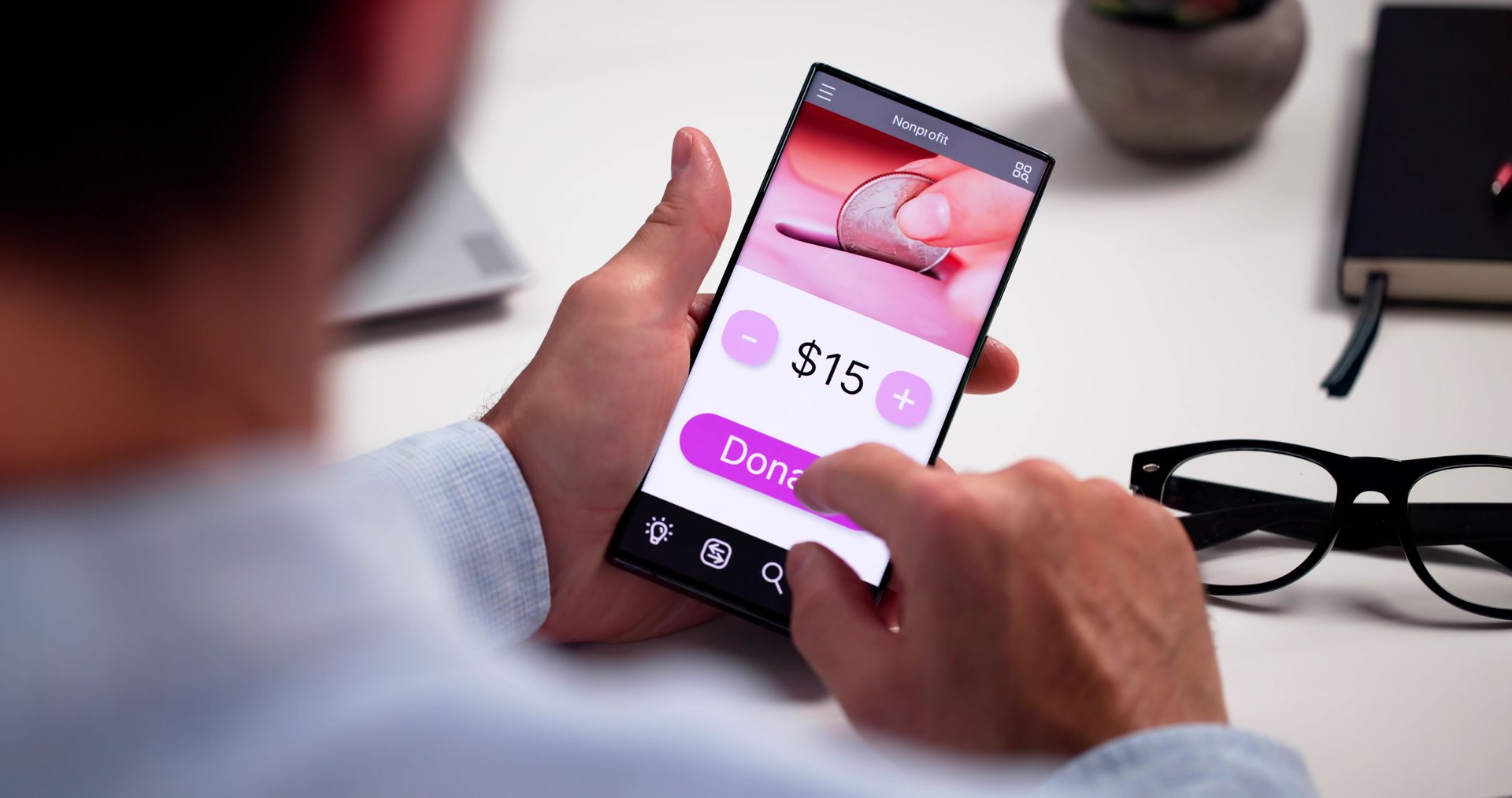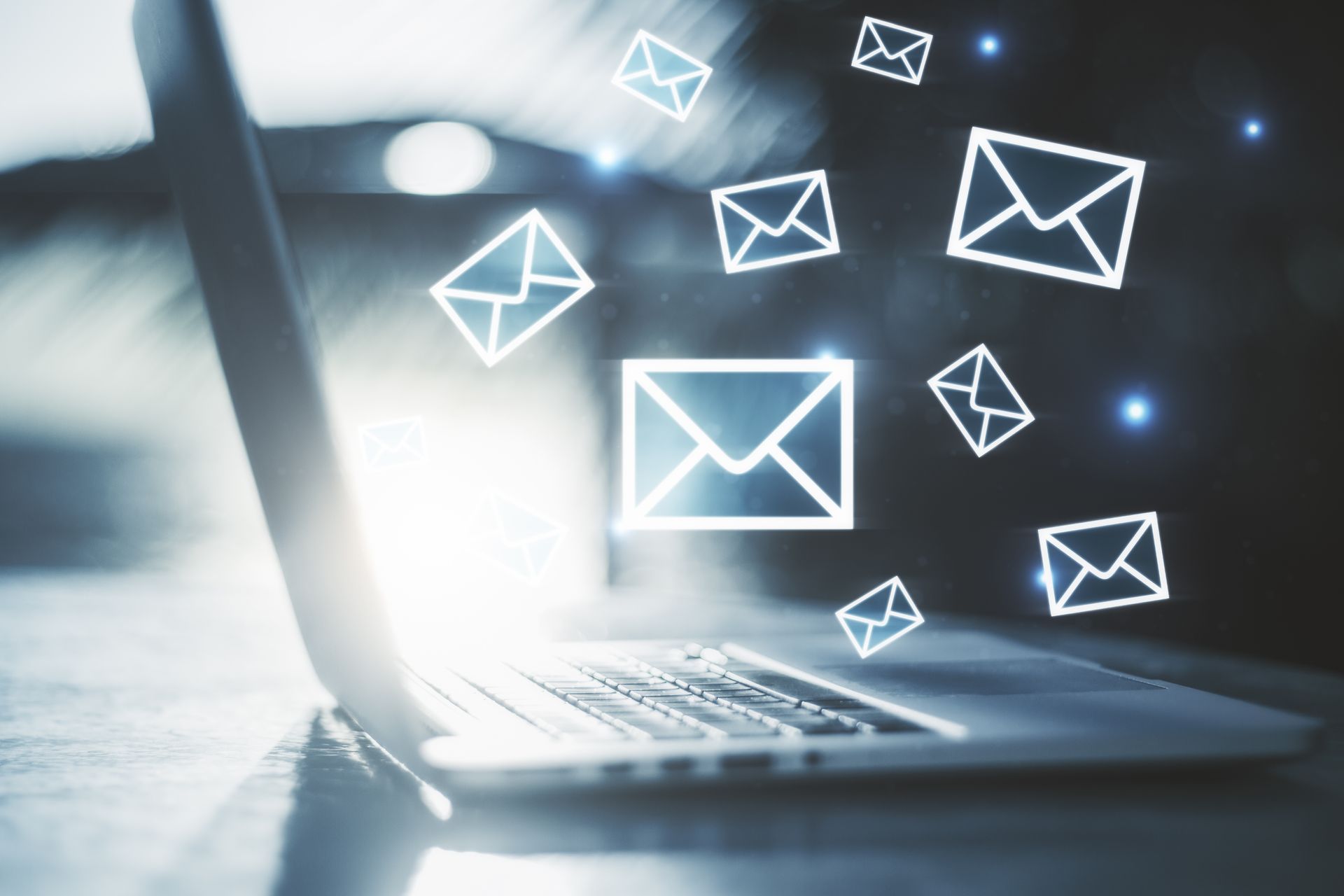7 Best Practices for Effective Email Fundraising Campaigns
Email fundraising can transform your nonprofit’s donation efforts. In this article, you’ll discover specific practices to create compelling emails, segment your donor list, and measure your campaign success. Learn how to engage donors effectively and boost your fundraising results.
Key Takeaways
- Email fundraising is highly effective, yielding a return of $44 for every dollar spent, making it crucial for nonprofits.
- Crafting compelling emails with personalized storytelling, clear subject lines, and strong calls to action significantly enhances donor engagement and fundraising success.
- Ongoing communication, including expressing gratitude and segmenting donor lists, fosters strong donor relationships and encourages long-term support for nonprofit causes.

Understanding Email Fundraising
What is Email Fundraising?
Email fundraising is a method of raising funds for a nonprofit organization by sending targeted and personalized emails to a list of subscribers, donors, or supporters. This approach involves crafting compelling email campaigns that inspire recipients to take action, whether it’s making a donation, volunteering, or spreading the word about the organization’s mission. By leveraging the power of email, nonprofits can reach a broad audience with minimal effort, making it an efficient and effective way to raise funds and support their cause.
Why are Email Fundraising Campaigns a Good Idea for Nonprofit Organizations?
Email fundraising campaigns are a good idea for nonprofit organizations because they offer a cost-effective and efficient way to reach a large audience, build relationships with donors, and raise funds. These campaigns can be easily tracked and measured, allowing organizations to refine their strategies and improve their results over time. Additionally, email fundraising campaigns can be used to raise awareness about a nonprofit’s mission, build a community of supporters, and encourage recurring donations. By utilizing email fundraising, nonprofits can maximize their fundraising efforts and achieve their financial support goals.
Why Email Fundraising is Crucial for Nonprofit Organizations
Email fundraising is not just a cost-effective strategy; it’s a powerhouse in the nonprofit world, generating an impressive return on investment. For every dollar spent on email marketing, nonprofits can see a return of up to $44, making it a highly efficient method for raising funds. The scalability of email campaigns allows organizations to reach a wide audience with minimal effort, making fundraising efforts more accessible and impactful.
Consistent and engaging email communication is the lifeblood of donor retention.
Personalizing messages helps nonprofits strengthen connections with supporters, reinforcing their commitment to the cause. Proactive engagement through regular emails ensures that nearly half of the donors feel more connected to the organization. This ongoing communication is not just about raising money but about building lasting relationships that can lead to long-term support. Additionally, implementing a monthly giving program can encourage recurring donations, providing a steady stream of support for the organization.
Moreover, email marketing provides valuable insights into donor behavior, helping nonprofits refine their strategies for future campaigns. Understanding what resonates with your audience can significantly enhance the effectiveness of your fundraising appeals. The ability to track and measure the success of each campaign ensures continuous improvement and better outcomes over time.
Preparing for a Successful Campaign
Review and Strengthen Your Database
Before launching an email fundraising campaign, it’s essential to review and strengthen your database. This involves ensuring that your email list is up-to-date, accurate, and compliant with anti-spam laws. You should also segment your list to target specific groups of donors or supporters, and personalize your emails to increase engagement and response rates. Additionally, you should review your email marketing services and ensure that they are providing you with the tools and support you need to succeed.
Here are some tips for reviewing and strengthening your database:
- Verify email addresses and remove any duplicates or invalid addresses.
- Segment your list based on donor behavior, demographics, or interests.
- Personalize your emails using names, titles, and other relevant information.
- Use email marketing services that provide tracking and analytics tools.
- Ensure that your email list is compliant with anti-spam laws and regulations.
By reviewing and strengthening your database, you can ensure that your email fundraising campaign is targeted, effective, and successful. This preparation sets the foundation for a successful fundraising campaign, helping you to raise funds and build lasting donor relationships.

Crafting Compelling Fundraising Emails
Crafting compelling fundraising emails is both an art and a science. The urgency of donation requests and the clarity of your message are paramount. Understanding your recipients and personalizing your message are key to making your fundraising appeals impactful. The best nonprofit fundraising emails are concise, well-formatted, and emotionally engaging.
In the following subsections, we will delve into the power of storytelling, the art of writing effective subject lines, and the importance of a strong call to action. Each of these elements plays a crucial role in driving support for your cause and ensuring the success of your email campaigns.
The Power of Storytelling in Fundraising Emails
Storytelling is a powerful tool in fundraising emails. Real-life beneficiary stories can significantly enhance emotional engagement, making your fundraising appeal more compelling. Starting your email with an emotional appeal or a success story can immediately capture the reader’s attention and draw them into your narrative.
Using visuals like photos and videos can strengthen your story, making it more vivid and memorable. Images of beneficiaries or the impact of the donations can evoke a stronger emotional response, encouraging readers to support your cause. An effective story in a fundraising email should not only highlight the need but also showcase the positive impact of contributions.
Incorporating these elements into your storytelling emails can inspire action by creating a personal connection between the donor and the cause. When donors see the real-life impact of their contributions, they are more likely to feel motivated to give, reinforcing their commitment to your organization.
Writing Effective Subject Lines
The subject line of your fundraising email is the first thing your recipients see, and it plays a critical role in whether your email gets opened or ignored. Personalization in subject lines, such as including the recipient’s name, can significantly improve open rates. Examples like “You’ve Volunteered. Now, Amplify Your Impact!” You can “Double Your Impact with One Click!” This phrase suggests that a simple action can significantly enhance your results. are highly effective at grabbing attention.
Effective subject lines should be concise, ideally between 4 to 15 words, to capture the reader’s attention quickly. Including the name of the cause or creating a sense of urgency, such as “URGENT: We Need Your Help Now!”, can make your emails stand out in a crowded inbox.
Remember, an engaging subject line is crucial for capturing a donor’s attention, leading to higher open rates and, ultimately, more donations. Avoid deceptive subject lines, as they can damage trust and harm your long-term donor relationships.
Creating a Strong Call to Action
A strong call to action (CTA) is essential in any fundraising email. It instructs readers on the desired action after reading the email, such as donating or signing up for an event. An effective CTA should be clear, concise, and evoke a sense of urgency to prompt immediate support.
Placing your CTA prominently within the first few paragraphs of the email ensures that it catches the reader’s attention before they lose interest. Highlighting the specific impact of donations in your CTA can motivate donors to give immediately. Phrases like “Donate today!” linked directly to your donation page can be very effective.
A strong and actionable CTA drives the success of fundraising campaigns, ensuring recipients know the steps to support your fundraising campaign.
Segmenting Your Donor List for Personalization
Segmenting your donor list is a powerful strategy for enhancing the relevance and effectiveness of your fundraising emails. By tailoring your messages to specific donor groups, you can increase engagement and retention. Understanding donor demographics and behavior allows you to create more personalized and impactful communications. Additionally, implementing a monthly giving program can help segment donors based on their commitment to regular contributions.
In the following subsections, we will explore how to segment your donor database effectively and the benefits of personalized fundraising emails. These strategies will help you connect more meaningfully with your donors and maximize the impact of your fundraising efforts.
How to Segment Your Donor Database
Effective segmentation of your donor database involves categorizing donors based on specific criteria such as demographics, donation history, and engagement levels. Factors like age, gift size, last donation date, and donation frequency can provide valuable insights into donor preferences and behaviors.
Considering these factors allows you to tailor messages to resonate with different donor groups, enhancing engagement and support. For example, younger donors might respond better to digital campaigns, while older donors might prefer more traditional methods like direct mail. Additionally, segmenting based on participation in a monthly giving program can help identify donors who are committed to regular contributions.
Personalizing your fundraising emails based on segmentation can significantly enhance the donor experience and drive more effective fundraising outcomes. This approach ensures that your messages are relevant and meaningful to each recipient, increasing the likelihood of donations.
Benefits of Personalized Fundraising Emails
Personalized fundraising emails can significantly enhance donor trust and engagement by providing relevant content that resonates with their interests and preferences. Tailoring the frequency of your emails based on subscriber preferences can prevent overwhelming donors and reduce unsubscribe rates.
Personalized emails often lead to quicker responses from donors, driving higher engagement and support for your campaigns. Addressing donors by name and referencing their past contributions creates a more personal connection and reinforces their commitment to your cause.
Overall, personalized fundraising emails are a powerful tool for building strong donor relationships and achieving your fundraising goals. They demonstrate that you value each donor as an individual, which can lead to increased loyalty and long-term support.
Optimizing Your Donation Page for Conversions
A well-optimized donation page can significantly impact your fundraising efforts by improving the user experience and encouraging more donations. Ensuring that your donation page loads quickly is crucial, as slow loading times can deter potential donors. Ideally, your page should load within three seconds to keep users engaged.
Mobile responsiveness is another critical factor, as a significant amount of website traffic comes from mobile devices. A simple donation form that only asks for essential information can lead to higher completion rates, making the donation process as seamless as possible.
Branding your donation page consistently with your nonprofit’s image can enhance trust and recognition. Providing a variety of payment options can also increase the likelihood of donations by accommodating different donor preferences. Optimizing your donation page creates a user-friendly experience that encourages more donors to contribute.

Strategies for Increasing Email Open and Click-Through Rates
Increasing the open and click-through rates of your fundraising emails is essential for driving engagement and donations. Timing and testing are key strategies in achieving this. Sending emails during peak engagement hours and conducting A/B tests can help you understand what resonates best with your audience.
In the following subsections, we will explore the best times to send fundraising emails and the benefits of using A/B testing to improve email performance. These strategies will help you refine your email campaigns and achieve better fundraising outcomes.
Best Times to Send Fundraising Emails
Timing is everything when it comes to email fundraising. Sending emails during peak engagement hours, typically between 10 a.m. and 2 p.m., can significantly improve open rates. The best times to send nonprofit fundraising emails are mid-week, specifically between Tuesday and Thursday. Additionally, mid-morning or early afternoon tends to be more effective for this purpose.
Fundraising emails are often sent during specific times. Popular periods include the start of the school year, the run-up to the holiday season, before major events and at the end of the year. These periods often see higher engagement as people are more receptive to donation requests during a year-end fundraising campaign.
Considering audience engagement timing and using a trial-and-error method helps determine the best times to send emails and maximize impact.
Using A/B Testing to Improve Email Performance
A/B testing is a powerful method for improving email performance. By comparing two or more variations of an email, you can determine which version resonates more with your audience. Elements that can be tested include subject lines, content, and visuals.
Conducting A/B tests on subject lines, for example, can help you understand which messaging drives higher open rates. Testing different formats and layouts can also provide insights into what engages your audience and encourages them to take action.
Utilizing A/B testing can significantly enhance email engagement rates and drive more effective fundraising outcomes. Continuously refining email strategies based on test results helps achieve better results and maximize fundraising efforts.
Tracking and Measuring Email Campaign Success
Tracking and measuring the success of your email marketing services campaigns are essential for continuous improvement. Monitoring key metrics such as open rates, click-through rates, and conversion rates can provide valuable insights into your campaign’s effectiveness. Most email marketing platforms offer analytics tools that help in evaluating email performance.
In the following subsections, we will discuss essential email marketing metrics and the importance of analyzing data for continuous improvement. These practices will help you refine your strategies and achieve better fundraising outcomes.
Essential Email Marketing Metrics
Understanding key email marketing metrics is crucial for assessing the effectiveness of your campaigns. Open rates, click-through rates, and conversion rates are some of the most important metrics to track. Engaging subject lines can significantly impact open rates, as 35% of email recipients decide to open emails based on the subject line.
The average open rate for non-personalized subject lines is around 16.67%, highlighting the importance of personalization. Well-structured layouts and compelling content are also essential for enhancing click-through rates and overall engagement.
Monitoring these metrics provides insights into what works and what doesn’t, allowing refinement of email strategies for better results.
Analyzing Data for Continuous Improvement
Analyzing data from your email campaigns is vital for continuous improvement. By examining key metrics, nonprofits can refine their strategies and improve future fundraising efforts. Understanding how different elements of your emails perform can help you decide on content, cadence, and timing that resonate best with your audience.
Implementing A/B testing allows organizations to experiment with various elements and optimize their email campaigns based on the results. Testing different subject lines, formats, and content can provide insights into what drives higher engagement and donations.
Adopting a continuous improvement mindset enhances your understanding of campaign success and helps you adapt your strategies for better outcomes. Regularly updating your approach based on data insights ensures that fundraising emails remain effective and engaging.
Expressing Gratitude and Building Long-Term Relationships
Expressing gratitude is a fundamental aspect of fundraising communications. Acknowledging donor contributions not only enhances engagement but also fosters loyalty and long-term relationships. Regular email communication that shows appreciation can keep your organization top-of-mind for future donations.
In the following subsections, we will explore the importance of sending thank-you emails and ongoing donor engagement strategies. These practices will help you build stronger donor relationships and ensure sustained support for your nonprofit.
Sending Thank-You Emails
Sending thank-you emails is a crucial step in acknowledging the impact of your donors’ contributions. These emails should focus on the donor’s impact and how their support furthers your organization’s mission. Highlighting specific achievements and key milestones can make your thank-you emails more meaningful and inspiring.
The tone of thank-you emails should be both grateful and uplifting, particularly after receiving major gifts. Expressing appreciation for donations of any size helps acknowledge all supporters and reinforces their value to your organization.
Timely thank-you emails, sent within 48 hours of receiving a contribution, can significantly increase the likelihood of repeat donations. Automated thank-you emails followed by a tangible note can further enhance donor engagement and retention.
Ongoing Donor Engagement Strategies
Maintaining donor engagement requires regular updates and personalized communication. Keeping supporters informed about the impact of their financial support and upcoming events fosters a sense of community and ongoing support. Implementing a monthly giving program can also be an effective strategy for maintaining regular donor engagement.
Strategies such as inviting existing donors to volunteer, attend events, or participate in campaigns can help keep them engaged and connected to your cause. Personalized communication based on donor preferences and past contributions can also strengthen donor relationships and encourage continued support.
Sending campaign update letters to donors, volunteers, and corporate sponsors can keep them engaged and informed about your organization’s progress and future plans. Regular communication and appreciation for ongoing support are key to building long-term relationships with your donors.
Summary
In summary, effective email fundraising campaigns are essential for nonprofit organizations to raise funds and build lasting relationships with donors. From crafting compelling stories and writing effective subject lines to segmenting donor lists and optimizing donation pages, every aspect of your email strategy plays a crucial role in your fundraising success.
By implementing the best practices discussed in this guide, you can enhance your fundraising efforts, increase donor engagement, and achieve your fundraising goals. Remember, continuous improvement and personalized communication are key to maintaining strong donor relationships and ensuring long-term support for your nonprofit.
Frequently Asked Questions
Why is email fundraising crucial for nonprofit organizations?
Email fundraising is crucial for nonprofit organizations as it is cost-effective and scalable, allowing them to reach a broad audience and establish enduring donor relationships. Additionally, it offers valuable insights into donor behavior, enhancing future fundraising efforts.
How can storytelling enhance fundraising emails?
Storytelling enhances fundraising emails by establishing an emotional connection through real-life beneficiary stories, which engage donors and motivate them to contribute. This approach not only illustrates the impact of donations but also inspires actionable responses.
What are some effective strategies for increasing email open and click-through rates?
To increase email open and click-through rates, send emails during peak engagement hours, utilize A/B testing for subject lines and content, and personalize your messages to connect with recipients. Implementing these strategies can significantly enhance your email performance.
How can nonprofits optimize their donation pages for conversions?
To effectively optimize donation pages for conversions, nonprofits should focus on fast loading times, mobile responsiveness, simplified forms, consistent branding, and providing various payment options. This approach enhances user experience and encourages donations.
What are the benefits of sending thank-you emails to donors?
Sending thank-you emails to donors is essential as they express gratitude, strengthen relationships, and significantly boost the likelihood of future contributions. By acknowledging their support, organizations foster a sense of connection and commitment among donors.


Want to move your idea from the scratchpad to reality?
Placid Creative is a creative agency for nonprofits. Working with clients nationwide from the heart of the Adirondack Mountains.
All Rights Reserved | Placid Creative, LLC
